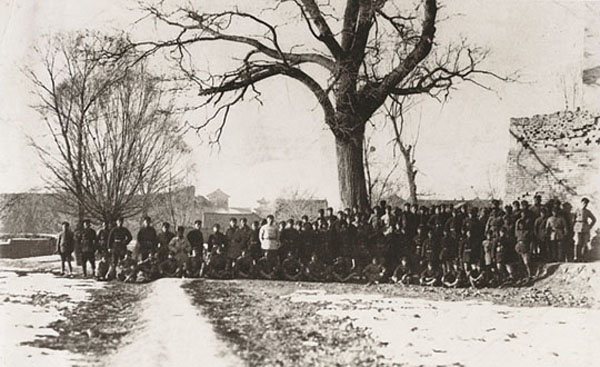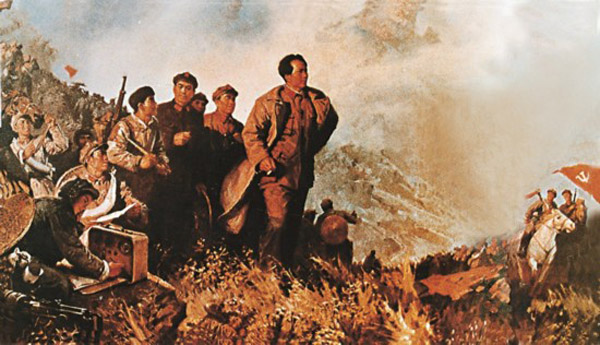 时刻新闻
时刻新闻

[China.org.cn]
Just like words have meaning, sometimes numbers have cultural significance. Whenever Chinese people hear the number 25,000, they automatically think of the Long March undertaken by the Red Army from 1934 to 1936.
Curious ones may be interested in how such a long distance could be measured. Historical accounts show that the length of 25,000 li (12,500 km) is a summation based on military documents and survivors' diaries rather than actual distance based on maps.
In fact, the number refers to the longest distance part of the Central Red Army covered.
It completed its Long March on Oct 19, 1935, when its Shaaxi-Gansu detachment arrived in Wuqi county in northern Shaanxi. "Mao Zedong told me, according to data collected by the regiment headquarters of the First Corps, that the unit covered the longest distance, 25,000 li," Xiao Feng, the party leader of the detachment, wrote in his dairy.
From then on, the term "Long March of 25,000 li" began to be recorded in the formal document of the Communist Party of China (CPC).
[NextPage]

Group photo of the First Corps of the Red Army when they successfully arrived in northern Shaanxi in 1935. [File photo/Xinhua]
During wartime, the collected materials were unable to be reserved, so the itineraries we resort to today are mainly from the detachments of the First Corps as well as diaries of survivors such as Chen Bojun, Tong Xiaopeng and Xiao Feng.
Despite the incomplete statistics and partial documentation, the available materials prove that the First Corp had marched at least 18,000 li, which is also referred in Edgar Snow's well-known book, The Red Star over China.
[NextPage]Meanwhile, other factors cannot be ignored in the calculation.
First, what the Red Army launched was a mobile warfare. They had to make detours and repetitive moves. The case of the 37th regiment of the Fifth Corps during Red Army's successful attempt of traversing the perennially snow-capped Jiajin Mountain and then climbing it again is an example.
It was in June 1935 when the regiment had already reached the other side of the mountain that it was ordered to climb back again to cover the main forces of the Central Army and block the shadowing enemy's attack.
Second, the Red Army had to raise fund and introduce themselves to the local people who had not heard of them. To do that, the soldiers had to walk many miles to meet the locals. According to Xiao Feng's dairy dated Nov 11, 1934, he was responsible for recruiting more soldiers and raising money when the army was recuperating in Baishidu county in Hubei province. On that day, he himself had walked for 65 li.
Third, during the Long March, particularly in its early stage, the Red Army frequently took the wrong route due to lack of maps. One case was recorded in Chen Bojun's diary on Dec 8, 1934, indicating that the 38th regiment was lost in wrong direction.
[NextPage]

An oil painting shows Mao Zedong and the Red Army during the Long March. [File photo/Xinhua]
As to Mao's quote about the unite covering the longest distance, it may refer to ground troops responsible for making reconnaissance, fighting on frontline, providing cover to main forces, etc. From the same departure point to the same destination, some regiment may cover more than twice the distance other regiments had covered.
In 80 years since the Long March was successfully completed in 1936, great transformation has taken on the routes that the Red Army marched. So, whoever tries to retrace the route of the Long March today will never walk the same road or cover the same distance the Red Army covered during the 1930s.



